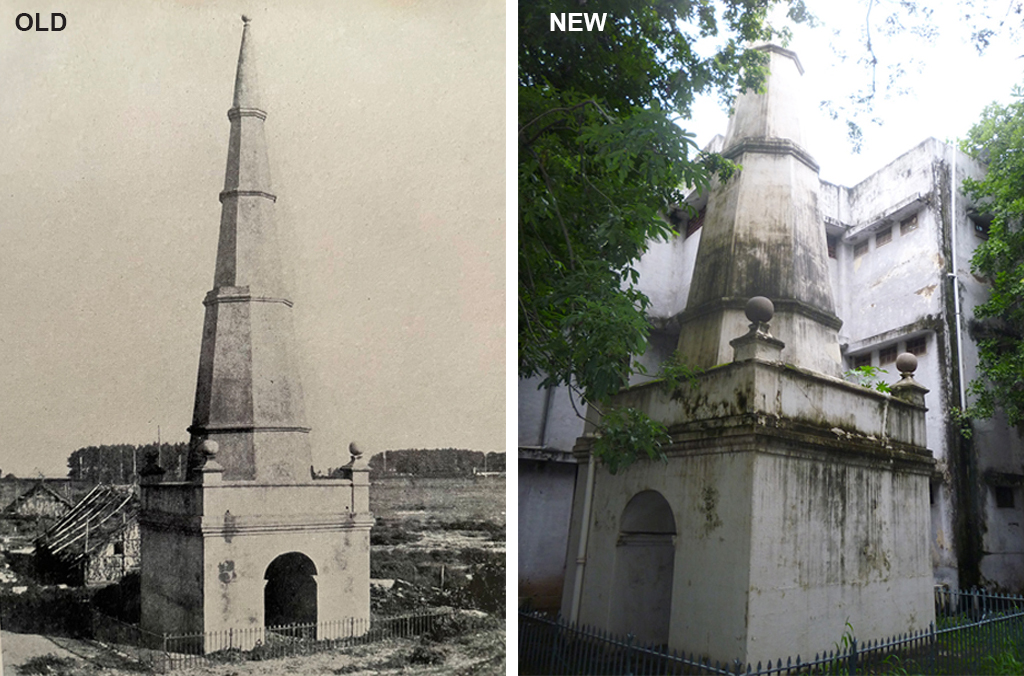Registered with the Registrar of Newspapers for India under R.N.I 53640/91
Vol. XXXII No. 1, April 16-30, 2022
Heritage Watch: When a monument becomes a problem
Who would imagine that the Yale Monument, so long associated with this city would now be declared as standing in the way of development? And yet that is true. Hynmers’ Obelisk, to give its correct name dates back to the 1680s. It marks the burial spot of Joseph Hynmers, second-in-council, Fort St. George, who died in May 1680. He was buried under this giant piece of masonry, at what was the Guava Garden cemetery of the British (for a more detailed account of this place, refer Madras Musings XXV, No 13, Oct 16-31, 2015– Know Your Fort Better and also this issue, Lost Landmarks). Mrs. Hynmers married Elihu Yale the same year and in 1689, David, the couple’s son died and was buried under the obelisk.
When that cemetery was declared a security risk in the 1750s, the surviving stones there were relocated to the yard around St Mary’s Church in the Fort. What was left behind was the Hynmers’ Obelisk and also the Powney Vault – a space where several members of that family were buried. The two kept each other company through the times when the surrounding area was the vast esplanade and later when the Law College came to be built on the site.

The Powney Vault vanished without a trace once work began on Metro Rail. This despite it being a ‘protected monument’ under the care of the Archaeological Survey of India! Now the High Court has written to the ASI asking for the space occupied by the Hynmers’ Obelisk. It is part of a two-acre space that the High Court desires for a car park. The ASI will of course, going by past record, willingly give its permission. This would be a travesty of the very mandate of the ASI. The monument deserves to be where it has been for 342 years.
Our OLD is of the obelisk, when its surroundings were uncluttered. The pic features in Hiram Bingham’s biography of Elihu Yale. Our NEW is around ten years old and taken by your editor.


1. Due to corruption charges and self-dealings, the oppressive British East India Company (not to be confused with the British Government) discharged Elihu Yale from the duties from his positions.
2. He returned to Britain with considerable fortune, no doubt from his loot in India, and funds Yale University.
3. He does not fund any university in India.
4. And, here are some slavish thoughts that wants to recognise the looters graveyard as a monument. Monument of what? Corruption, loot and slavery!
What a shameful article!